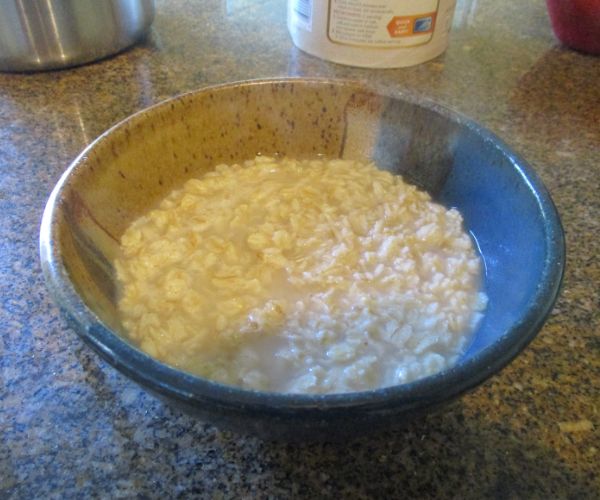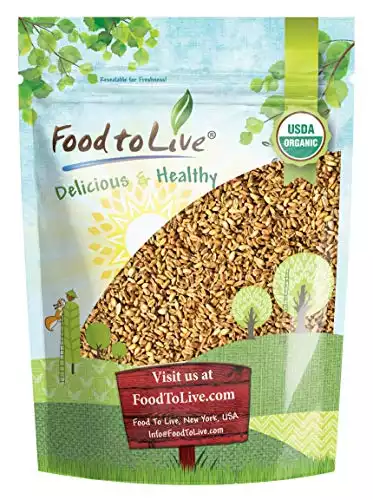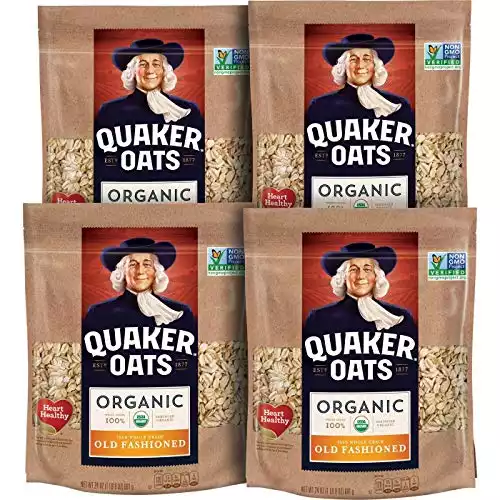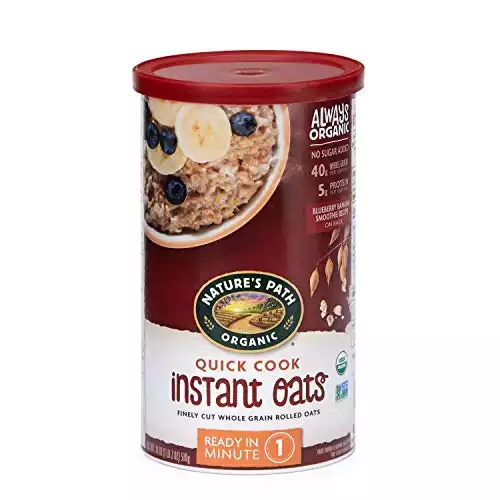No prepper pantry is complete without a stash of oatmeal, especially since unopened oats can last as long as two years. But with multiple ways of preparing oats, it makes sense that you’d wonder if you can eat them raw.
You’ll find quite a variety of oats at your supermarket, and each one has its own processing and preparation. Technically, none of them are really “raw.” Before oats hit the shelves, they’re all processed to some degree.
You’ll be happy to know that it’s somewhat safe to eat uncooked oats but with a few caveats. There are some precautionary measures that you should take, depending on the type of oats you have.
Types of Raw Oats

Oats are a reliable kitchen staple because they’re an excellent source of dietary fiber necessary to promote a healthy digestive system:
- High in protein, lipids, and potassium
- Contain lignin, cellulose, and hemicellulose
- Good source of B1, B5, iron, magnesium, and phosphorous
- Good source of insoluble fiber
Regardless of the type, store-bought oats have generally been toasted or steamed. This processing removes the inedible outer husk and extends the shelf-life of oats, preventing them from going rancid.
While there are some uses for rancid kitchen staples, including oats, it’s much more economical to know what you can get out of your supplies while they’re still good.
Here’s a list of the most common types of oats, how they’re processed, and if you can eat them raw.
1. Whole Oat Kernels
All oats begin with the whole oat kernel. In their pure form, they’re wrapped in an inedible husk. Traditionally, whole oat kernels are typically used for livestock feed, and you won’t find them on your grocery store shelf because oat kernels are indigestible.
Before oats can be consumed, they are dehulled and heat-processed to terminate enzymes that cause rancidity. Once the outer shell is removed, oats are then cut, rolled, or ground for easier consumption.
Whole oat kernels are a low-energy feedstock and should not be consumed by humans at all, either raw or cooked. However, if you’re planning to maintain livestock during TEOTWAWKI, it’s an excellent source of food for your cows, sheep, or hogs.
2. Whole Oat Groats

Oat groats, sometimes called hulled oat kernels, have had their outer husk removed but still contain the bran, germ, and endosperm. They’ve been heated and dried to remove moisture, so they have been partially cooked and are no longer fully raw.
Not only does this extend their shelf life, but it also increases anti-oxidant activity and phenol content. Additionally, because they remain whole, they digest more slowly, placing them lower on the GI scale.
Oat groats are best served as a source of dietary fiber. However, the increased phytic acid prevents any proper absorption of an already limited supply of nutrients. Most people tell you to simply soak your oats, but soaking alone is not necessarily sufficient enough to remove phytic acid.
Technically, it’s recommended that you sprout unrolled oats for at least five days, and then soak them for 17 hours at 120 degrees to remove the phytates. Seems a bit unrealistic, so you may want to minimize your consumption of groats if you’re concerned with phytic acid.
If you must consume raw groats, at least soak them for 12–16 hours to minimize any extreme gastric distress. Cooking groats is the easiest on your digestive system.
3. Steel-Cut Oats

Sometimes referred to as “Irish oats” or “pinhead oats,” steel-cut oats are oat groats that have been chopped using steel blades. This results in a thick, coarse oat nugget that’s chewy and nutty and has a very different taste and texture than rolled or quick oats.
Steel-cut oats are slightly more processed than groats, making them a little easier to eat raw, but you’re still likely to experience gastric distress since raw oats will absorb any digestive juices, inhibiting proper digestion.
The same recommendations apply to steel-cut oats as they do to oat groats. Cooking is recommended, but soaking can help.
4. Rolled Oats

Rolled oats are steel-cut oats that have been cleaned, steamed, treated, and pressed without being cracked and are essentially the same thing as old-fashioned oats. Aside from your morning bowl of oatmeal, rolled oats are often used in baking and smoothies.
The good news is that simply rolling oats gets rid of the majority of phytic acid, making them one of the best forms of oats to eat raw if you must.
Eating raw rolled oats may appeal more to your digestive system than steel-cut, but overnight fermenting is still recommended to prevent them from robbing your intestines of their necessary digestive liquids.
5. Quick Oats and Instant Oats

Instant oats have been processed the same as rolled oats, but they’ve been rolled extra thin to expedite the cooking time required. These oats have a much milder flavor, and their texture is mushy when compared to rolled oats.
Regardless of which form of oats you prepare, their nutritional value remains the same. However, their placement on the GI scale will fluctuate. The less processed, the lower the GI Index.
Furthermore, the milling of oats does not remove their phytic acid. If anything, the process destroys many of the nutrients.
Consumed in small amounts as a topping, mixed with nuts as a granola, or even ground into flour are all viable options for eating raw quick oats.
Their raw form would likely be the easiest on your digestive tract, but the same disadvantages regarding phytic acid still apply.
Risks of Eating Raw Oats
While you can eat raw oats, if not prepared properly, they can cause intense gastric distress and leave you nutrient deficient. Phytic acid, enzyme inhibitors, and hard-to-digest proteins can all have harmful consequences.
Additionally, dry oats contain amylopectin, a major component of starch. Amylopectin not only causes high levels of glucose and insulin, but it also causes insulin resistance, which can cause Type II diabetes.
Even though oats present themselves as having a decent GI level, it’s probably not something you want to eat every day. Rice bran, legumes, pasta, and barley are all much better alternatives in terms of glycemic index.
Be advised raw oats contain avenin, which mimics gluten. So, beware if you have gluten sensitivities.
Preparing Raw Oats for Consumption
If you’re concerned about phytates, then preparing raw oats that have been exposed to high heat during their milling process is a bit laborious. An acid soak, sprouting, and soaking for five days is sufficient enough to remove 98% of the phytates. Adding malted rye can apparently enhance phytate reduction as well.
For unprocessed oats that have not been exposed to high heat, soaking in acidulated water with a bit of vinegar or lemon juice for twenty-four hours at around 100 degrees reduces some of the phytic content.
Overnight fermenting for rolled oats is best for moderate reduction of phytate levels and improved digestion.
By soaking the raw oats, it reduces the phytic acid and provides other benefits:
- Improves digestibility
- Increases satiation
- Decreases insulin spikes
- Reduced cooking time
If you’re not concerned with phytates, then a simple soak for 24 hours will let your oats absorb enough water to save your digestive tract from gastric distress.

Part of a solid food storage plan is storing foods that provide you with adequate nutritional value. While oats provide some benefits, they shouldn’t be your mainstay, especially if you don’t plan to cook them.
Image Credits
Bodhi Peace, CC BY-SA 4.0, via Wikimedia Commons
Yonygg, CC BY-SA 4.0, via Wikimedia Commons
Yonygg, CC BY-SA 4.0, via Wikimedia Commons
Yonygg, CC BY-SA 4.0, via Wikimedia Commons
Yonygg, CC BY-SA 4.0, via Wikimedia Commons





